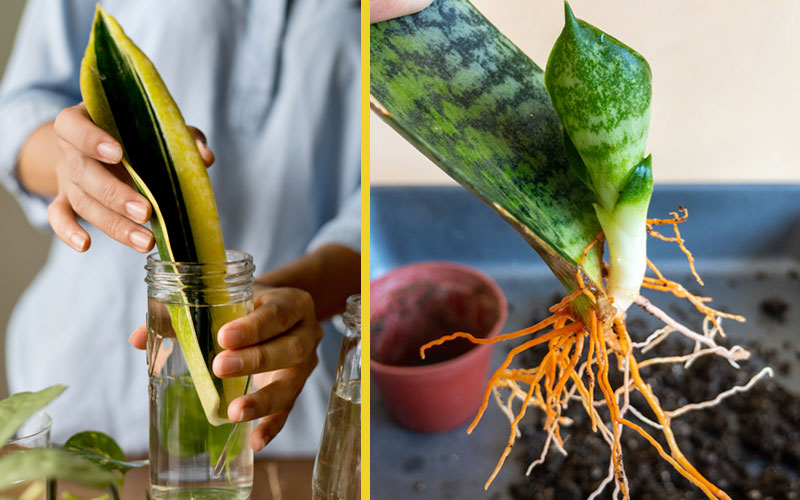
Are you searching for an attractive houseplant that does not require a lot of attention? The benefits of growing plants in your home include aesthetics, purifying the air, and brightening your moods. Why not consider Sansevieria, also called snake plant? Here is some helpful information about this popular houseplant:
Snake Plant Basics
Sansevieria, commonly called snake plant, is perhaps one of the most recognizable plants that people grow indoors. Most botanists believe that it is native to Asia and parts of Africa. In different parts of the world, sansevieria was not just revered for its beauty. Some African cultures used its fiber to create textiles, and used it for medicine and protection against evil.
Italians named the plant after the Prince of Sansevero, who was a gardening enthusiast from the 1700s. Its nickname, “snake plant,” derives from the wavy patterns on its tall, graceful leaves.
Other gardeners call it “mother-in-law’s tongue”, because the leaves are long and pointed. Wikipedia.org states that there are at least 70 different species of sansevieria. We recently wrote an informative article on the different varieties of snake plants, you can find it here.

How to Grow and Care for Snake Plants
If you never had luck with houseplants, then the snake plant is for you. It is also an ideal houseplant for busy people who do not have a lot of time to fuss with persnickety plants. They are available in most gardening centers, or you may have a friend who will give you a start to plant.
• Characteristics: Depending on the species you grow, snake plants can grow anywhere from 8 inches to 12 feet high. Their leaves are shaped like upright, pointed swords, with attractive variegations of green, yellow, and white. Some varieties produce short-lived blooms that resemble miniature lilies. Snake plants propagate by root divisions.
• Water requirements: Snake plants are quite forgiving when it comes to watering, because they are native to desert areas. Water it just enough to moisten the soil around it, and let it dry out between watering. Keep your watering to a minimum during the winter season.
• Soil requirements: Since they are desert plants, choose a potting soil with a high concentration of sand—such as cactus medium. Plant in a pot that drains well, and is big enough to accommodate the growing roots and leaves. Re-pot your snake plant as it grows, to prevent it from being root-bound.
• Sunlight & Temperature requirements: For optimal plant health and growth, place your potted snake plant where it will receive indirect light. These hardy houseplants can also tolerate direct sun or limited lighting. Normal house temperatures are fine for snake plants, if it is between 55-85 degrees F. They cannot tolerate any temperatures below 50 degrees F.
• Safety precautions: All parts of the sansevieria plant are mildly toxic, so keep it away from small children and pets. Signs of toxicity include vomiting, salivating, nausea, and diarrhea. For children, call 911 or the National Poison Control Center immediately. Seek immediate vet attention for a pet.
• Propagation: See this guide on how to propagate your snake plants in water.

Common Problems That Snake Plant have and Solutions
• Pests: Even the strongest of houseplants can be susceptible to insect pests. The usual culprits for snake plants are spider mites and mealy worms. These tiny pests cause leaf damage as they bore tiny holes for drinking sap. Tell-tale signs are wilted, falling leaves and small, dark dots on the snake plant.
• Solutions: If you notice mealy worms on your plant, soak a cotton ball with rubbing alcohol and dab them with it. The alcohol will kill them without harming your plant. Rub the leaves gently with a damp cloth to eliminate spider mites.
• Root rot: Sometimes, snake plants are affected with root rot, which is a fungal infection that can kill the plants from the roots up. The most common cause of this condition is overwatering. If your snake plant looks wilted and yellowed, gently pull the plant out and examine the roots. Root rot causes the roots to turn black and mushy as they are dying. You might notice a distinct fungal smell.
• Solutions: After pulling up the plant, carefully prune away mushy, decaying roots. Dip the remaining plant into an anti-fungal solution formulated for houseplants. Re-plant your snake plant in a new pot with fresh soil.
Discard the infected soil in the trash (not your compost bin), because fungal infections are contagious. Clean any gardening tools you used and the old pot with a diluted bleach solution. If your soil and pot drain well, and you do not over water, then your snake plant is less likely to be affected by this condition.
Fun Facts
• In some Chinese traditions, growing snake plants around your home bring good luck and guards against evil forces.
• The photosynthesis process of snake plants is more active at night. Having one potted in your bedroom can provide you with more oxygen and less carbon dioxide.
• One of the pollutants that snake plants filter from the air is formaldehyde, a known carcinogen.
Related Articles







